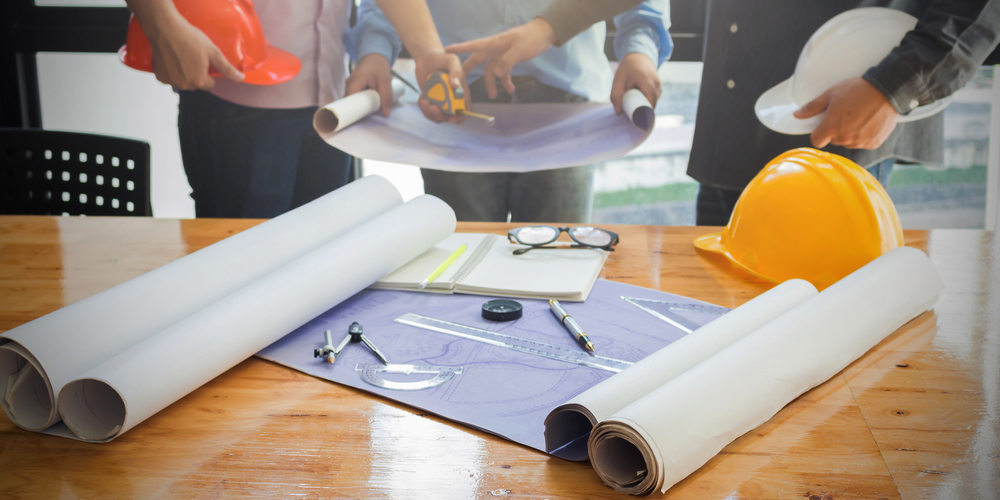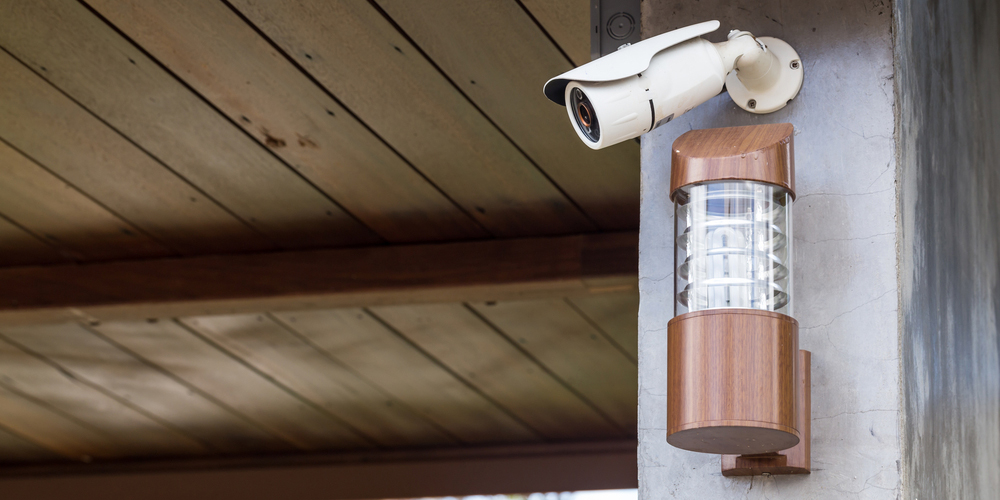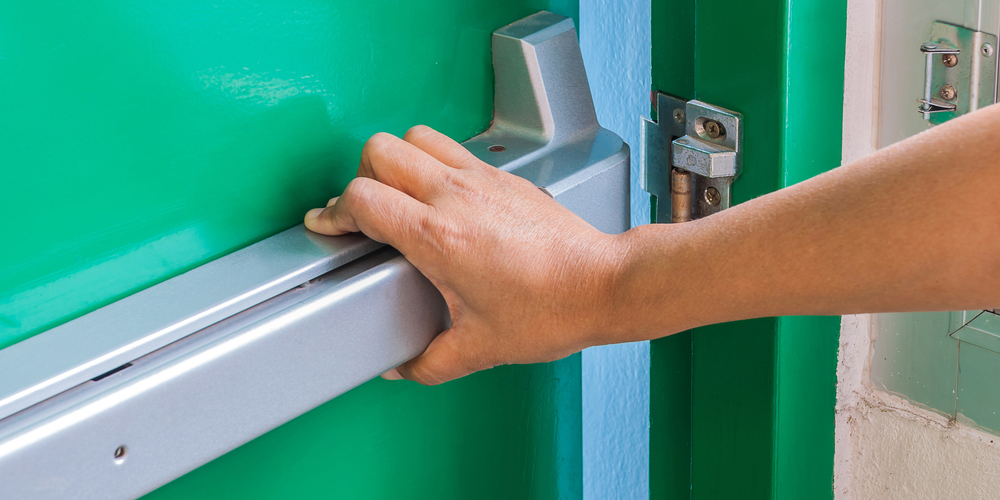Lock Blog
A resource for consumers, locksmiths, and security professionals
A resource for consumers, locksmiths, and security professionals

Building assessments are a common practice, and they help ensure that security and safety protocols are being held up. As with any assessment, a building assessment gives you the opportunity to look over what you have and see what can be changed. It is important for property managers to always keep an open mind whenever they are overseeing or undergoing a building assessment. This allows them to be more receptive to changes that can be made to improve the building. If you approach a building assessment with this mindset, it also allows you to simultaneously conduct a physical security assessment.
As far as improvements go, physical security measures are some of the best kind. One aspect that buildings often neglect is their security. However, realizing that physical security assessment is a big part of building assessments and physical security management is beneficial. As I said earlier, a building assessment is an opportunity, and if it is utilized the right way, you can implement some new physical security measures that will help increase the safety and security of your building. In order to see the benefit of some of these physical security measures, we will first take a quick look at why building assessments and physical security assessments are important, as well as the role that security measures have to play in these.
Building assessments are commonly referred to as property condition assessments. These assessments are performed to determine the condition of various aspects of any given property, but in most cases, they are used in relation to commercial properties.
It is usually the case that a building assessment is conducted to show potential buyers the state of a commercial or residential building, but it can also be used for maintenance purposes. This is the capacity in which we will be discussing building assessments in this post. We will also be looking at the physical security measures that you should consider when you conduct a building assessment alongside a physical security assessment.
Most building assessments target specific areas of a building’s framework, and this is usually done to ensure that there is no stone left unturned. Think about it, what better way to make sure that every aspect of building safety and security is covered than to follow a thorough process. Some examples of the specific targeted areas include life safety, building site, building envelope, etc.
Due to the fact that there are so many facets of a building that have to be taken into consideration when it comes to building assessment, I will take a look at multiple physical security measures. This will be done to help ensure that the physical security solutions are as complete as possible. Let’s get started.
When it comes to physical security assessment and maintenance, doors upgrades are among some of the most common upgrades. This can be attributed to the fact that people access doors more frequently than almost any other element of a commercial or residential building.
In many ways, the exterior of a commercial building is the first point of access and the first line of defense. However, without any strong doors and door locks in place, perimeter security offers very little in terms of physical security measures. Door upgrades will fall under several different categories when it comes to building assessment because they have a role to play in life safety, compliance interior elements and building envelope as well.
The building assessment process allows you to take stock of how well your doors hold up in terms of physical security. This gives you the opportunity to choose doors that are better suited to your commercial property. It also allows you to upgrade other aspects of the door that help enhance its security.
The other aspects that I am referring to include the door hinges, the door frame, etc., that all work in conjunction with the door to enhance its security. Many people wonder why physical security is important, and doors answer that question to some degree. They are great tools at restricting and granting access, and they can be used to enhance some physical security measures you already have in place.
During your physical security assessment take the time to consider the way people interact with your doors, and also pay attention to what exactly your doors are guarding. For instance, the main door that leads to the interior of an office or a home should be given a different assessment than a door that gives way to a storage closet.
It is important to consider the material that the door is made from when you are assessing it. This should be viewed through the perspective of longevity as well as security. Ideally, you want to use a door that is able to remain strong and robust over time, and also one that provides some resistance to forceful entry methods used by burglars and criminals.
Upgrading door locks is essential, unless you have the world’s most secure lock. Door lock upgrades go hand in hand with door upgrades. A door achieves very little if it is not paired with a door lock. Much in the same way that building security is compromised without either of these elements in place.
Many commercial properties use locks that were not chosen for security purposes. A locksmith can help you with a new lock installation if you need better locks tailored to security. There are many different factors that you will have to consider when you are installing commercial grade security locks, and it is important for your locks to cater to these factors.
For instance, you want to ensure that the commercial locks you install are adequately keeping your commercial property secure without placing the people inside at risk. It would not make sense to upgrade to a higher security commercial door lock that effectively endangers the safety of the occupants of a particular building. You do not want people getting stuck in an emergency simply because highly secure locks barred their exit point. It is important to weigh both multiple aspects and find a secure solution.
These are just some of the factors that have to be considered when you are assessing your door locks during a building and physical security assessment. Commercial door locks have a much different set of underlying guidelines than residential door locks. However, mortise locks can be used on both commercial and residential structures. A common example of this kind of high-security mortise lock, is the Medeco mortise cylinder. Commercial door locks are usually meant to be much stronger and last much longer because they come into contact with so much more people during the day. They are also often used in conjunction with much bigger structures.
Window lock upgrades should also be considered whenever you are carrying out a building assessment. Increasing the strength of your door locks is well and good, but it solves very little if your window locks are left vulnerable or nonexistent. Window lock repairs and installations can be done for commercial properties and residential properties alike. This might not be necessary for windows that are generally very high up and out of reach, but it should always be considered for windows that are easily accessible.
Window film has been a popular staple in the commercial real estate industry, and it is used on many commercial properties alongside other physical security measures. It has taken the residential community quite some time to catch on to this beneficial trend, but we will discuss that at a different date, in a different post. Window films are essentially a thin protective film that is placed over a glass window to help increase their resistance and make them more secure. Many business owners utilize window security film similar to the BDF S8MC window security film.
These protective films can be used in conjunction with window locks to really elevate the physical security of your windows. They are often used to prevent burglars from simply breaking through your windows to gain access to your property. As far as physical security devices go, this is one of the more subtle ones because it is usually very hard to tell whether or not a protective film is being used on a window.
It is always important to take consider the layout of your building when you are thinking of using window film as a security measure. This is something that you will most likely come across under the building envelope section of assessment plans. It is crucial to think of security from more than one standpoint.
As much as you want the measures put in place to increase your security and deter crime, you never want to make your building a deathtrap for the people that occupy it (as I alluded to in the door section up above). For instance, if you use shatterproof window film over your windows, you should make sure that you are not using in on a window that can potentially be used as an auxiliary emergency exit. However, you should also make sure that this auxiliary emergency exit is accessible by your residents or employees, but not to any unauthorized individuals.

Surveillance cameras are definitely more popular than they were a few years ago, and their popularity is continuing to increase at a steady pace. Much of this growth should be attributed to accessibility that easy to set-up DIY cameras brought to the market and the fact that people have learned more about security cameras. Surveillance cameras serve to heighten the physical security measures that one already has in place because it gives you a way to monitor and record things that might have previously gone unseen.
Surveillance cameras help guard the perimeter (parking lot, driveway) as well as interior hallways, stairwells, and other locations that might have limited visibility. In a commercial setting, these can be used to deter theft and monitor arising situations. The same can be said for using surveillance cameras as a physical security measure in a residential setting.
As far as physical security measures go, very few help elevate physical security management the way in which surveillance does. That is usually one aspect of physical security that people forget to mention. If you have several different physical security measures in play to help keep a building safe, it can get hard to manage them all at the same time. In this context, management refers to the work that has to be done to effectively monitor and maintain different aspects of your physical security. In this sense, surveillance is a double-edged sword that helps you monitor other security measures while simultaneously serving as one.
There are several options to choose from when it comes to surveillance cameras, and you can either go with CCTV cameras or IP cameras. The good thing is that a physical security assessment allows you to figure out which option meets your specific needs. Keep in mind that a building assessment is not only conducted to help identify problems. It is also carried out to help you find the best course of action for combating the issues that might come to your attention. This is why it helps to conduct a building assessment with considerations for physical security measures in mind.
If you consider surveillance cameras and the physical security benefits that they bring to the table, you also have to take the time to consider the benefits of alarm systems and everything that comes with them. Similar to surveillance cameras, security systems are meant to offer a boost to your physical security measures. Most security systems also help you monitor the status of your building’s security from remote locations, which comes in handy if something is going wrong and you are not in the immediate vicinity.
I make the comparison between security systems and surveillance cameras because security systems also allow you to continue to pay close attention to your property, and its security measures even when you are not present. In addition, these security systems can be integrated with your surveillance system and other physical countermeasures that you already have in place.
Access control systems are a great asset for any building to have, especially commercial buildings. They are a great tool for instituting physical access security, but they most likely will not be needed on any residential property (unless the homeowner is super paranoid). However, when it comes to commercial security, access control systems simply help you get a better hold of physical security access control. Which means that it helps you monitor the way people gain access to your building.
Armed with this kind of data, building managers and owners can plan their safety and emergency plans around this, or even safeguard against inherent vulnerabilities. No matter the route that you decide to go with it, there is no doubt that access control systems can help you make your physical security measures more efficient.
Aside from realizing that you might benefit from the use of access control systems, a physical security assessment also gives you the chance to figure out how to make these systems work for your building space. If you have sectors of your building that require more stringent access and verification methods, then you can implement access control systems. It is important to make sure that the use of access control systems is feasible, which is where the layout of the building comes into play.
Another section that building assessments target are the mechanical systems. When it comes to building assessments, mechanical systems usually cover air conditioning, heating, and ventilation among other things. The use of these elements in any building structure usually implies there is some external structure that it is used in conjunction with. For instance, if there is any air condition installed, there is usually an external unit attached to an exterior section of a building.
Many building managers and homeowners forget that these external units are extremely valuable and are prime targets for burglars and criminals. Since you will be taking stock of the way these work in your building during a physical security assessment, you should also factor in the security of these exterior elements. If your air conditioning unit has an external piece, then you should make sure that it is bolted down and secured. This can be done by using security cages that are reinforced with high security padlocks.
The same basic concept can apply to other facets of your building. Many people forget that a huge part of any building is the exterior, not just the interior. It is crucial to make sure that each of these sectors is being kept as secure as possible. Physical security solutions are inadequate if they only focus on one aspect of your building’s security. Security should not be viewed in parts, but rather as a whole. This helps you adequately cover all bases, which is one of the main reasons why building assessments are conducted in the first place.

I decided to split panic bars off from door locks up above because they are somewhat different. Although they each work in tandem with doors to grant or bar access, panic bars are far better suited towards security emergencies. The installation of panic bars is something that is geared more towards commercial buildings than it is residential buildings. These bars are usually installed on high traffic doors that lead to the exterior of a building or into specific hallways and rooms. They are usually found in commercial buildings and in many schools as well.
In some instances, door and window sensors do not need to be added to a building as separate physical security measures. This is because they are often included as a packaged deal with most security systems or surveillance cameras. However, if you do not get these items with your alarm system or camera, they can be obtained as additional stand alone physical security measures and installed in an effort to increase physical security layers. These sensors are often made of simple circuits that reply upon a connection, or break in power supply to trigger an alarm or response.
Essentially, these circuits are used as additional layers of security and help detect whenever anyone tries to gain unauthorized access to a building through a door or window. Another benefit of these sensors is the fact that they are usually very inconspicuous and hard to spot. A typical door sensor utilises current that passes through a closed circuit. If the circuit is opened while there is still a current being generated, then a signal will be sent indicating that there has been a break in the circuit which corresponds to someone gaining unauthorized entry.
Performing a building assessments and physical security assessment can be a handful. However, if you look on the bright side of things, it is always an opportunity to practice effective physical security management and implement some new physical security measures. As I have said time and time again, security (especially physical security) is always prone to change. There is always the chance that new vulnerabilities might spring up, and old physical security measures that you had, may not be enough to stop them. If you take the time to conduct a building assessment, make sure you pay close attention to physical security and see if you can take advantage of any of the considerations outlined above.
Category: Commercial, Residential, Safety & Security